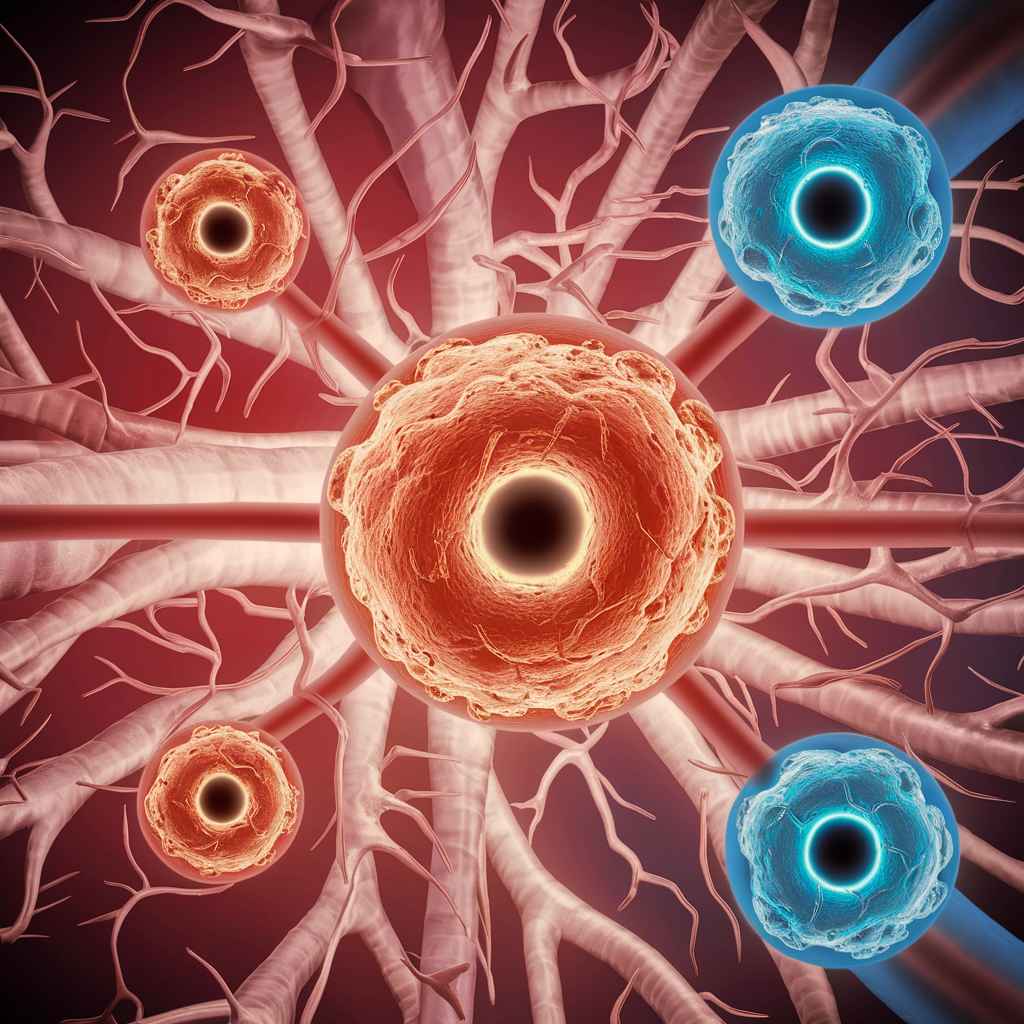B cell (B lymphocyte), are an essential part of the immune system that provide adaptive immunity. Surface receptors known as B cell receptors (BCRs) enable them to recognize certain antigens. Originating from the bone marrow, these lymphocytes circulate throughout the body. Upon encountering an antigen, they can differentiate into memory cells, providing long-lasting immunity by retaining information about past infections, or into plasma cells, which produce antibodies to eliminate pathogens.
Table of Contents
Definition

White blood cells known as B cells are derived from bone marrow-derived stem cells. They were originally discovered in birds at the Bursa of Fabricius, hence their name. The ability to identify particular antigens is a characteristic of them, which are identified by the membrane-bound antibody receptors on their surface known as B cell receptors (BCRs).
Types
- Naive B cells: They are undifferentiated lymphocytes that have not yet come into contact with their specific antigen. Always searching for antigens, they move through the circulation and reside in secondary lymphoid organs like the spleen and lymph nodes. Diverse surface immunoglobulin receptors (BCRs) that can recognize a broad spectrum of antigens are expressed by them.
- Plasma cells: Naive lymphocytes activate and differentiate into plasma cells in response to their specific antigen. The factories that produce antibodies are called plasma cells. Huge amounts of antibodies, also called immunoglobulins, are produced, developed, and released into the circulation and tissue fluids by them. These antibodies have the ability to attach to antigens and neutralize their detrimental effects or mark them for eradication by other immune cells.
- Memory B cells: Certain lymphocytes that are triggered during an immune response develop into these cells. Certain lymphocytes that are triggered during an immune response develop into these cells. These cells give the body immunological memory by remaining there for a long time. When exposed to the same antigen again, memory They are prepared to unleash a powerful and quick defense. The body’s capacity to eradicate the invasive infection can be improved by their ability to swiftly develop into plasma cells, which also speeds up the synthesis of antibodies.
Development

The process of their formation in the bone marrow involves multiple stages:
- Common lymphoid progenitors (CLPs) are the offspring of hematopoietic stem cells (HSCs).
- CLPs go on to become progenitors of them.
- B cell progenitors undergo selection procedures and immunoglobulin gene rearrangement to produce mature B cells that express distinct B cell receptors (BCRs).
- After maturing, they go from the bone marrow to secondary lymphoid organs including the lymph nodes and spleen, where they may come into contact with antigens.
Applications
- Immunization: Central to the success of vaccination strategies, vaccines stimulate the production of antibodies specific to particular pathogens, providing immunity against infections. By understanding the biology of these cells, scientists can develop vaccines that effectively prime the immune system to recognize and combat specific diseases.
- Diagnosis: The blood’s B cell-produced antibodies can be measured to help diagnose infections, autoimmune conditions, and some types of cancer. The identification of certain antibodies assists medical professionals in determining the existence of infections or aberrant immune responses, which in turn informs treatment choices and patient care.
- Immunotherapy: Treatments that use B cell power, including monoclonal antibody therapy, have changed the way many diseases are treated. Designed to target certain antigens, monoclonal antibodies are employed in the treatment of infectious illnesses, autoimmune disorders, and cancer. These antibodies provide targeted and efficient therapeutic treatments by modulating immune responses and directly targeting sick cells by their selective binding to antigens.
- Research: In biomedical research, they are crucial instruments that aid in the study of immunology, antibody synthesis, and immunological responses. B cell biology research contributes to our understanding of immune system function and dysfunction and opens new avenues for the creation of vaccines, innovative treatments, and diagnostic tools.
Summary: As the immune system’s primary players in adaptive immunity, B cells, also known as B lymphocytes, are vital. B cell receptors (BCRs), which are surface receptors that allow them to recognize particular antigens, are found on them, which originate from the bone marrow. They play a vital part in the body’s defense against infections and are essential to the effectiveness of vaccination techniques because of their capacity to make antibodies and develop immune memory. They can also be used in immunotherapy, biomedical research, and illness diagnosis, which advances our knowledge of the immune system and medicinal treatments.
Frequently Asked Question(FAQ)
What are B cells?
B cells, referred to as B lymphocytes, are a subset of white blood cells that are essential to the adaptive response of the immune system.
Why are B lymphocytes called B cells?
B lymphocytes are called “B cells” because they were initially identified in the Bursa of Fabricius, an organ present in birds, they are known as “B cells”.
Related Articles

